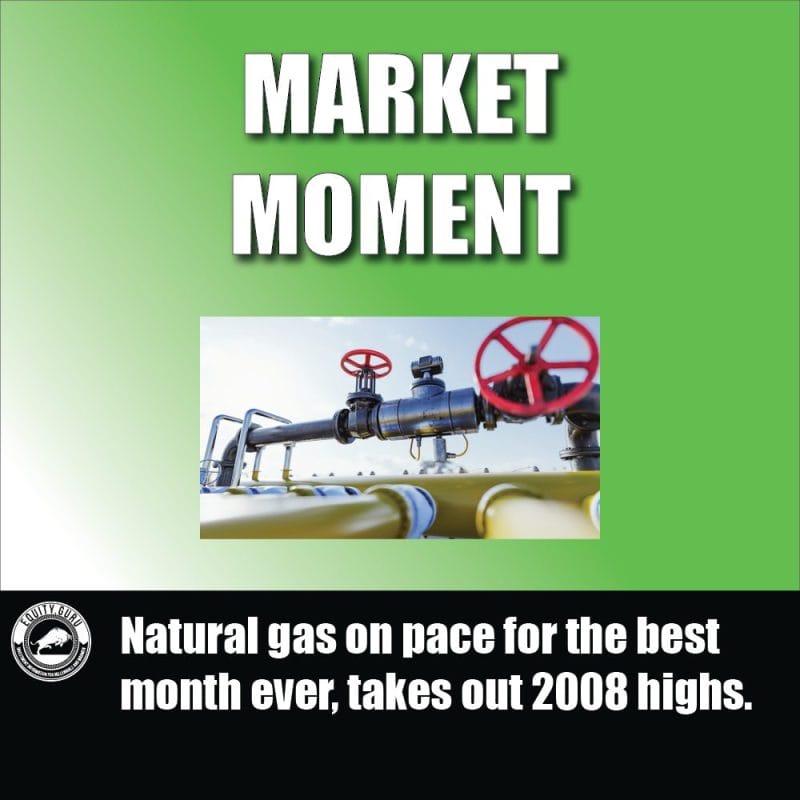Natural gas prices have been spiking in recent days, and many traders have not been paying attention. While a lot of focus is on the Federal Reserve and a potential US recession, geopolitics is making an impact in Europe.
Europe is slowly weaning off of Russian gas but here’s the problem: a replacement for Russian gas will be expensive and will take some time.
Natural gas prices are surging around the world as hot temperatures stoke demand for the fuel, and Europe’s attempt to push away from Russian fuel stirs global energy markets.
Natural gas hit its highest level since July 2008 and is up 77% for the month of July! Gas is on track for having its best month EVER going back to the contract’s inception in 1990.
“Although the magnitude and speed of recent natural gas price gains point to contributing non-fundamental market dynamics, supportive fundamentals are nonetheless the primary driver,” EBW Analytics Group wrote in a note to clients.
“Fundamentally, scorching hot weather is the predominant bullish driver,” the firm added.

Let’s get to geopolitics.
Europe, and the markets, loved the news that Russian gas would flow as normal after maintenance ending July 22nd. But things have changed. And it has to do with another turbine part.
Gazprom has said it would further reduce flows through Nord Stream 1. The pipeline will operate at just 20% of its capacity, and Gazprom said this is due to turbine maintenance. Many analysts think this is Russia weaponizing gas.
“This is not the end of Russia’s weaponization of natural gas flows, in our view, and there remain few near-term alternatives for even current reduced flows to the EU – lending [to] ongoing upside price risks,” RBC wrote last week in a note to clients.
Europe is now preparing for the colder months.
On August 1st, the European Commission will begin to reduce its demand for gas with no alternative in place. They have used the term, “save gas for a safe winter“:
European Union countries on Tuesday reached a deal to voluntarily reduce gas consumption by 15% starting next month, and in an emergency, the cuts would become mandatory.
Member states are now required to submit energy plans to the Commission by the end of September and update plans every two months until March 2023. There is proposed legislation that would allow the Commission the authority to declare a “Union alert” and impose mandatory gas caps on member states.
Europe plans to fill its gas storage capacities to 80% by November. European Commissioner for Energy Kadri Simson expressed pessimism in interviews. “We risk ending this winter with empty storage, which will be impossible to refill in time for the next heating season,” she warned.
Things are not looking good for Europe. Personally, I am expecting food, fuel and energy shortages come Fall and Winter for Europe.
This is not even mentioning the Euro zone and inflation. Obviously with gas prices rising, inflation will still remain high. The European Central Bank did recently raise interest rates by 50 basis points but they also unveiled an unlimited bond purchasing tool. The European Central Bank seems to have a small window for raising interest rates to tame inflation. Geopolitics and the potential sovereign risk with Italy may limit the ECB even more, allowing inflation to runaway. As I said, it does not look too good for Europe.
A dark winter is ahead.

